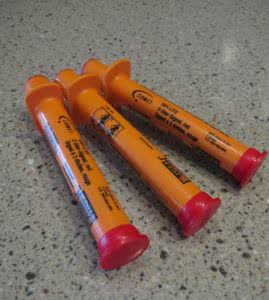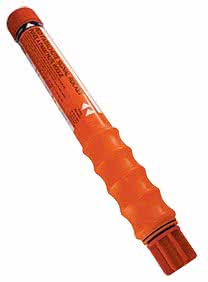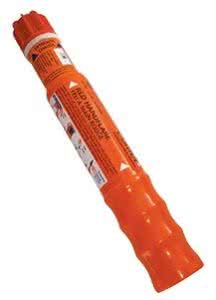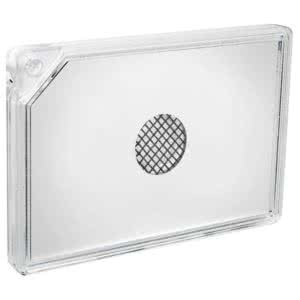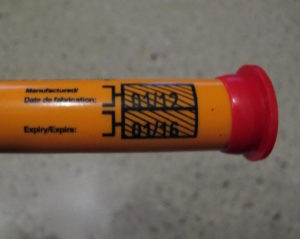Should You Carry Flares When Paddling?
This question often comes up, do you need to carry flares with you, especially with many paddlers now carrying cell phones, VHF radios, PLB’s and satellite messengers? In fact, the Transport Canada Small Boating Regulations don’t require you to carry any kind of visual signaling device unless you are in a boat over 6m in length, (many double kayaks), and only when they are more than 1 nautical mile offshore.
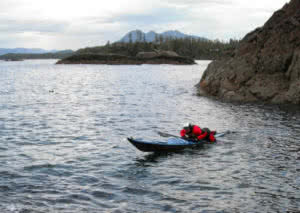 Also, according to Transport Canada, the recreational boating community and enforcement agencies have expressed concern over the difficulty of dealing with expired flares and the environmental impact resulting from their disposal. They have also found that the lack of flares has not been identified as a primary contributing factor in boating fatalities in recent years and as such Transport Canada is proposing an option to reduce the number of mandatory flares for larger vessels. Of course none of this really impacts individual paddlers in boats under 6m who aren’t required to carry them anyways.
Also, according to Transport Canada, the recreational boating community and enforcement agencies have expressed concern over the difficulty of dealing with expired flares and the environmental impact resulting from their disposal. They have also found that the lack of flares has not been identified as a primary contributing factor in boating fatalities in recent years and as such Transport Canada is proposing an option to reduce the number of mandatory flares for larger vessels. Of course none of this really impacts individual paddlers in boats under 6m who aren’t required to carry them anyways.
So, back to the original question, as a paddler, should you or shouldn’t you carry flares.
Reasons Why You Should Carry Flares
First of all, you need to understand that capsized paddlers in the water are very difficult for rescuers to see. Hanging onto your capsized boat can help, but in rough conditions with your very low position in the water, it is still very difficult.
Secondly, if you are using a cell phone (hopefully in a tested, fully waterproof container in which you can still operate the phone) or a standard VHF radio, you will be able to alert the authorities as to your predicament but they still have to find you. This is where communication devices like PLB’s (Personal Locator Beacons), DSC (Digital Selective Calling) VHF Radios and Satellite messengers are superior. They have a GPS function giving rescuers your exact location. This assumes of course that the device is on you. Flares can aid rescuers visually by identifying approximately area where you are and this can dramatically reduce the search area and rescue time. For more information on Electronic Communication Devices check out our blog post, by clicking the link.
Thirdly, the waters around Victoria are very cold. (See our Safety Guidelines Post). Your survival times are not very long so the quicker you are rescued the better. If firing off a flare gets those rescuers to you a little faster, so much the better.
Limitations of Flares
Small rocket aerial flares only rise 100-150 meters (300- 500 ft) and only burn around 5-7 seconds, so they can be easily missed, especially if you are paddling in remote locations. A parachute flare rises 300 meters (1000 ft) and burns for around 40 seconds so there is a better chance of someone seeing it, so they may be better for more remote regions.
Even if someone sees a flare all they will know is that someone is in distress within an approximate area. Rescuers still have to find you and while flares help get rescuers closer, they don’t completely solve the problem.
Types of Flares
The type of flare you will want to carry as a paddler is going to be determined by where and when you are paddling. If you are paddling within 3 nautical miles of shore or on inland waterways all you may need are the small marine rocket flares. If you are paddling further offshore or in remote regions you will want to consider parachute flares.
Small Rocket Flares
Small rocket flares can easily fit into a pocket on your PFD, (which is where they should be carried in case you get separated from your craft). This type of flare is completely self contained and is preferable to any type of device that requires loading, such as flare guns and flare pens, where cold fingers and nasty conditions make loading and firing them impractical.
Rocket flares still require 2 hands to fire them, so you should read the instructions on what is required before you actually need them, and think about, or better yet practice how you are going to hang onto your boat and fire off flares at the same time.
Flares of this type are good for daylight or night time use. They are obviously, far more visible at night and much less visible on a bright sunny day. Rocket flares typically only burn for 5- 7 seconds and rising to 100- 150 meters (300-500 ft). Because of their short duration, they can be easily missed.
Parachute Flares
If you are paddling well offshore or in very remote regions, the likely hood of anyone seeing small rocket flares is remote and the larger parachute flare may be a better choice. They much go higher, around 300 meters (1000 ft), and remain aloft much longer with a burn time of approximately 40 seconds. However, parachute flares are much larger than the small rocket flares so are impractical to carry on your person.
Smoke Flares
Smoke flares are strictly a daytime signal, usually lasting 30-60 seconds. Smoke has the advantage of being very visible and will lead rescuers directly to you. There are some limitations of course. High winds will quickly disperse the smoke and they will be of limited use in fog and useless at night. Smoke flares like parachute flares are much larger and not practical to carry on you.
Hand Held Flares
Hand held flares produce a bright burning flame and make for a reasonable daytime and a good nighttime signalling device. The maximum range these to be of any use is about 3 nautical miles or line of sight. Like a smoke signal, if someone sees it, they will know exactly where you are. Once again, these flares are larger and not practical to carry on you.
Flare Pistols & Pens
These types of devices are not recommended for paddlers as they require loading a launching device and your hands are going to be busy just trying to hold onto your gear. Cold fingers and rough conditions are also going to make the loading process very difficult. If you do choose to use any of these types of devices, keep them dry and check them regularly for the effects of corrosion.
Other Visual Signalling Devices
A signal mirror is an inexpensive easy to use signalling device that can easily be carried in a pocket of your PFD. Some of them even have a sighting device so you can aim it at a target. Obviously a sunny day device, they can be very effective in helping guide rescuers to you. Make sure you attach it with a lanyard in case you drop it.
When to Use Your Flares
Knowing when to use your flares requires some judgement and discipline depending on your situation. If all you have is three rocket flares and they are your only signalling device, you should fire 1 off immediately and wait to see if a boat is turning towards you or someone on shore waves at you. If not wait at least 3 minutes and fire off another one. Once you see a boat turning towards you or someone waving, fire off another one to confirm you are in distress.
If you have managed to contact someone using an electronic device and know they are looking you may want to wait until you actually see them, then fire off a rocket flare to aid them in locating you, or better yet if you have a handheld or smoke flare in the boat set it off to guide them to you.
Conclusion
Carrying a minimum of 3 small rocket flares in a pocket of your PFD is a strongly recommended. They provide a backup to a failed or lost electronic device, as well as a way to get rescuers to you once they have started looking. I have a good friend who did a lot of solo paddling in surf skis and always carried flares with him. One day in some nasty conditions off Trial Island he got knocked over and lost his paddle trying to get back on his boat. The flares he fired off that day saved his life when a nearby sail boat noticed them and came in to help.
Marine flares are supposedly waterproof. If you are on the water often, you should find a way to keep them dry, such as a small dry bag or ziplock bag. Also, keep an eye on the expiry date and replace them as required. (they will either have an expiry date or a date of manufacture with an expiry date usually 4 years after manufacture). It is recommended you carry at least 3 rocket flares with you to allow more chances of someone seeing them as well as the possibility that one or more of them may fail to fire. If you are heading to more remote locations consider carrying a parachute flare.
In the end, nothing substitutes for good preparation including filing a float plan, being aware once on the water and having a repertoire of good, well practiced rescues. With a float plan, if all else fails and you get into trouble and someone misses you, they will at least know where to start looking. For an interesting true story on how badly things can go wrong, check out Brian Henry’s excellent post Kayak Rescue Goes Right.
Safe Paddling!!
Bruce Holland – You can also catch me at Ourhomehas6wheels.com or Brakelightfoto.com
